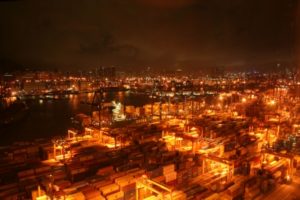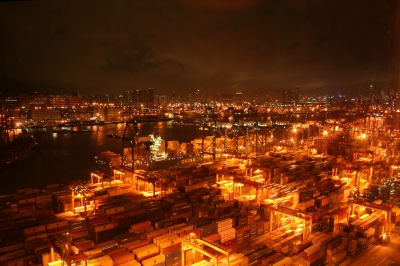
The Philippines is keeping tabs on the brewing trade dispute between the United States and China—two of its largest trading partners—and is hoping that both sides would eventually set their differences aside and issue a renewed commitment to liberalization, according to Finance Secretary Carlos Dominguez III.
Given that such disputes “generally end up with nobody winning,” Dominguez said the Philippines as well as its fellow member-states in the Association of Southeast Asian Nations (ASEAN) has expressed concern over the US-China trade row.
“The Philippines is watching very carefully as are the ASEAN finance ministers to see how this trade dispute will work out. We’re hoping that cooler heads will prevail, and that there will be a renewed commitment to openness to liberalization and to fairness for everybody,” Dominguez said in an interview in Singapore on the sidelines of the recent ASEAN Finance Ministers’ and Central Bank Governors’ Meetings.
In a later interview in Clark, Pampanga, Dominguez said the Philippines would not be severely affected by the simmering trade dispute between China and the US because the country’s economy is centered on growing the market locally.
“So we’re very robust. We don’t rely on exports or imports as much as other economies. So we’re sort of insulated,” Dominguez said.
“But still, I’m not downplaying. If there is a full-blown trade war, everybody is going to be affected,” he added.
Dominguez said the government is now focusing on the ASEAN market as a way to help mitigate the effects of a full-blown trade war between the US and China on the country’s economy.
“As I said, we are investing domestically. But that’s not enough. You know in any trade war, that will affect all the countries in the world,” Dominguez said.
China was the Philippines’ top trading partner in 2016 with trade worth US$21.937 billion or 15.5% of the country’s total trade during that period, followed closely by Japan with trade amounting to $21.552 billion or 15.2% of the country’s total trade, according to data from the Philippine Statistics Authority (PSA).
The United States ranked third, which PSA data show accounted for 11.6% or $16.427 billion of the Philippines’ total trade for 2016.
US President Donald Trump threatened last week to impose an additional $100 billion worth of tariffs on Chinese goods, which is on top of the $50 billion in punitive duties he has already imposed on steel, aluminium, and other products from China.
China responded by releasing a list of more than 100 American products—including automobiles, aircraft, and agricultural commodities such as soya beans—targeted for retaliatory tariffs and said it would take its case against the US to the World Trade Organization (WTO).
“(They are) our two large trading partners. These disputes generally will end up with nobody winning. And we are very concerned, and we have expressed that concern here at the Finance Ministers Meeting of the ASEAN,” Dominguez said.
Couched in general terms, the Joint Statement of the 4th ASEAN Finance Ministers and Central Bank Governors’ Meeting issued last April 6 underscored the regional bloc’s commitment to “international trade and investment,” which it said “are important engines of growth and development.”





